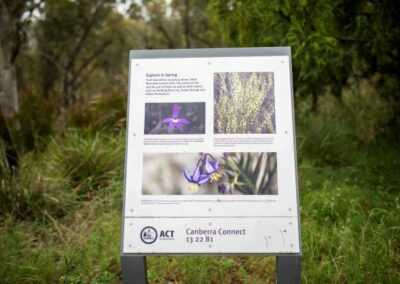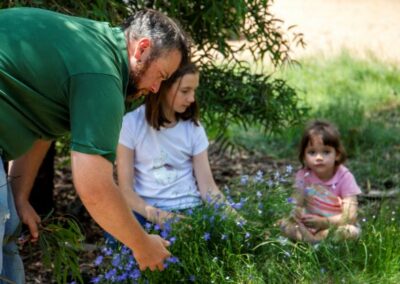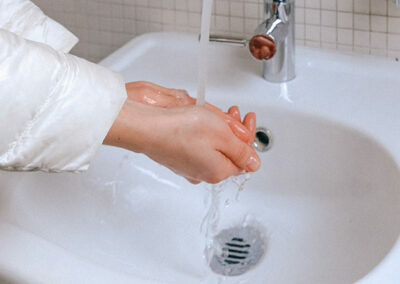
Creating an Indigenous plant-use garden: harvesting
Time Allocation: 40 minutes
Activity Level: Complex
Introduction
Harvesting your native produce will not only provide the experience and joy of growing your own edible plants, but also provide a deeper understanding of First Nations peoples culture and histories.
Checklist
Instructions
 STEP 1
STEP 1
Plan
Begin this activity at your location with an Acknowledgement of Country. By acknowledging the land, you are also making a promise that you will care for the Land, the waterways, the plants and the animals.
Use your plant labels and garden guides along with onsite monitoring to determine the best time to harvest your plants. Timing may vary, for example, you may need to harvest in your school garden before holiday periods.
Ensure you have your collection resources ready and revise safe harvesting techniques. Wear protective footwear, use safe lifting procedures and look for spiky plant material and insects when harvesting.
Use the activity sheet to record each step of harvesting, describe what is happening.
 STEP 2
STEP 2
Collect
Examine your produce for any disease or insect damage before harvesting.
A sustainable practice is to take what you need, and not what you greed. This ensures that there is always something left for the animals, the next person and the next time.
Fruits, nuts and seeds can be picked carefully by hand whilst root vegetables may need to be pulled gently from the soil using a trowel or spade to loosen the soil. Blady grass material will need to pulled gently or cut off near the base.
 STEP 3
STEP 3
Clean
Clean produce is important for healthy eating.
Make sure you wash your hands using soap or sanitiser before cleaning or eating your collected produce.
Once collected, use water to wash your produce. Using a colander, bucket or similar container.
Place your washed produce on a paper towel or clean tea towel so the produce can dry off naturally.
 STEP 4
STEP 4
Share
You may like to use scales to weigh your harvest before you divide the produce equally. Containers or paper bags will help to easily distribute the produce. Use the activity sheet to help children devise ideas to get the most out of their harvest.
Discuss:
- What part of the plant have you harvested?
- What is your plant harvest going to be used for?
- How would you prepare your plant material for use?
- What have you done to ensure you have harvested your produce sustainably and in a way that supports caring for Country?
Complete the activity sheet to record your learnings.
Extension Activity
Extension 1
Create a harvest schedule for your Indigenous plant-use garden and record what month and plant part you will be harvesting.
Extension 2
Imagine you have a native food restaurant what would you serve? Design a two course meal using ingredients from your Indigenous plant-use garden.